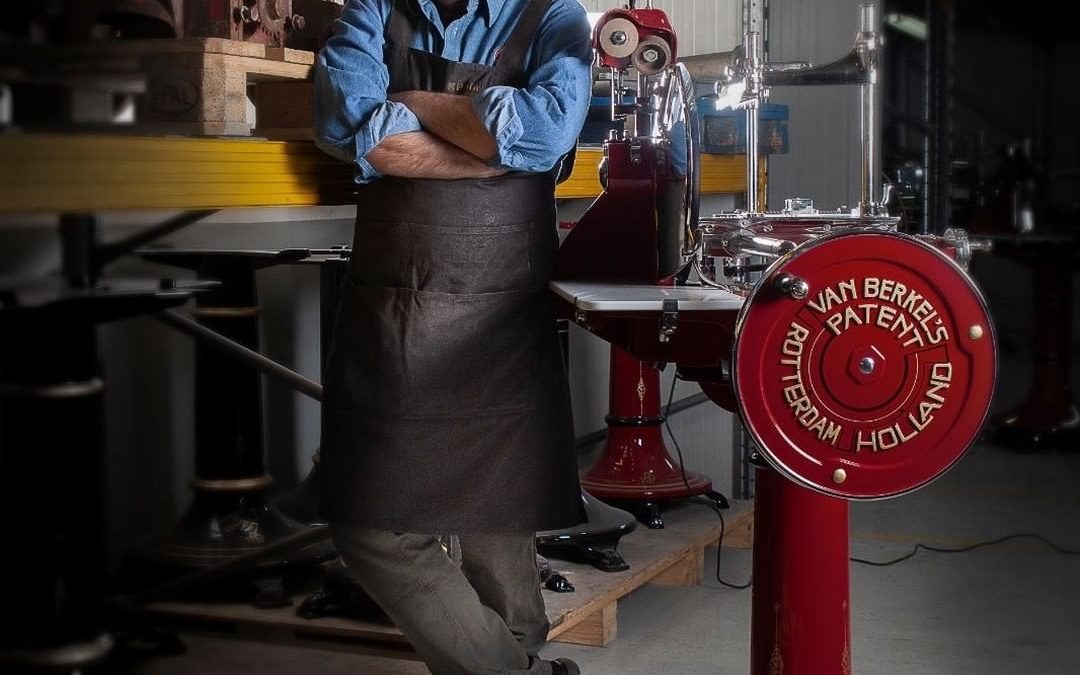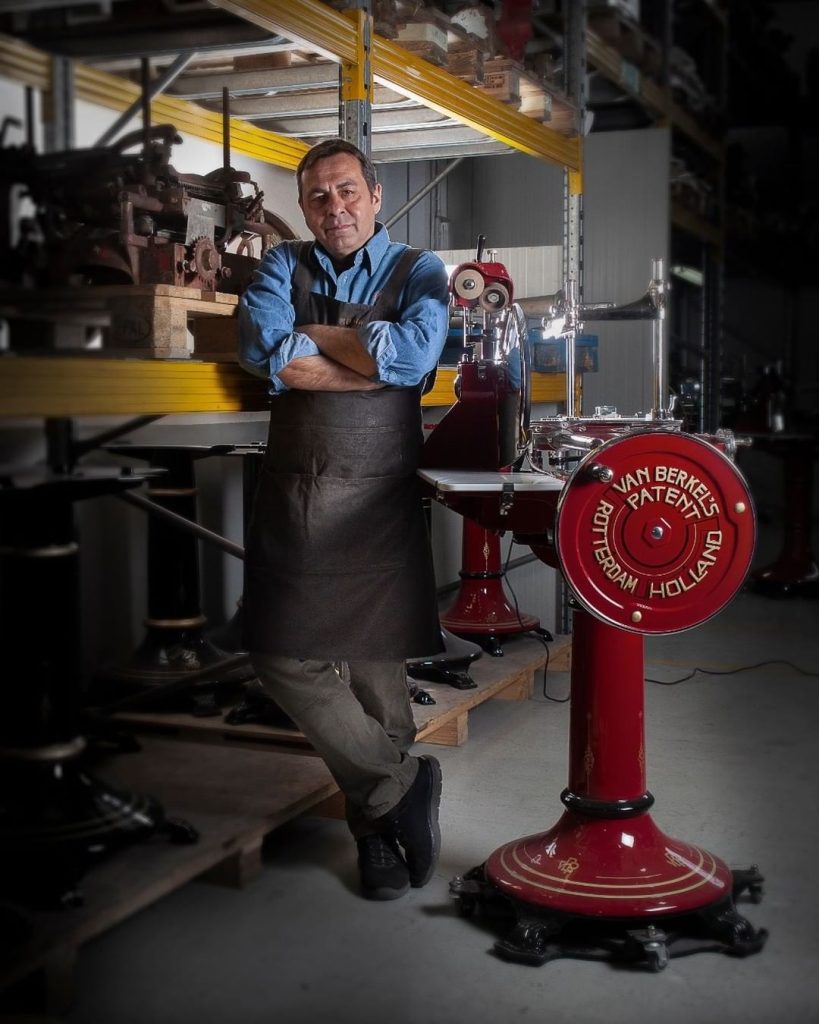A personal overview on original Van Berkel Slicers
Van Berkel Slicers, the most iconic slicing machines ever, seen from the perspective of Antonio Barra, who has restored more than 100 of them over the past 30 years, having an in-depth knowledge of their operation and features that make each model unique.
What is a Van Berkel meat slicer for you?
Vintage Van Berkel slicers, before representing my work, are my passion. I consider myself one of those lucky people who can say they work with their passions, with the objects they love. For me, every day is a new challenge, a new restoration. This job also allows me to keep my memories alive, when as a child my mother used to send me to do grocery shopping and at the local shop I saw the butcher using just one of these machines to slice ham, cooked ham, mortadella. These are strong emotions that touch all 5 senses.
Where did the passion for restoring these authentic historic Van Berkel slicers come from?
This passion wasn’t born by chance, but from a series of events and from a strong passion and motivation. At first, we produced blades for slicers of all kinds.
Over the years there had been requests regarding the production of blades for the historic Van Berkel flywheel slicers. Thanks to the support, passion and skills of my collaborators we were able to study the functionality of these slicers in depth, in order to understand their mechanism, and consequently we have designed and manufactured the best blades, suitable for each model of Van Berkel flywheel slicers, which could take these instruments to their original performance levels.
The path that led to the manufacturing of the most suitable blades for these machines led me, over time, to purchase many original Van Berkel slicers, to study them carefully, since there are many different models for which we could not offer a standard blade but a custom-designed one.
In time my warehouse started to fill up with these magnificent objects, so beautiful that I felt the need to do something to bring back the beauty and functionality they had when they were produced, in some cases more than 100 years ago. This is how the strong motivation to create the ideal restoration method began. Piece by piece, down to the last little screw, I created the procedure to restore historic Van Berkel flywheel slicers to their former glory. I have discovered over time that these slicers, being historical objects, are highly appreciated and have an increasing value on the market.
I am convinced that a piece of “Made in Italy” in the high-end “food” sector also includes the use of Van Berkel slicers, and I like to think that the restoration process carried out by “Original Slicers” is important precisely to guarantee the highest quality and performance of the slicer in this context.
Who can use a restored original Van Berkel slicer? Do only shops, restaurants, wineries or other commercial activities choose them?
Absolutely not. The Van Berkel flywheel slicers can also be used in a domestic context, in a showroom and obviously in a shop.
A restored original Van Berkel can be a prestigious piece of furniture both in a private home and in an environment intended for public and commercial purposes.
These slicers represent, in addition to the brand, a lifestyle, a passion, and are linked to a set of values, such as authenticity, passion for quality food, and craftsmanship. And I add, as I said before, “Made in Italy”.
Depending on the context and the space available, we proceed to a careful evaluation of the most suitable model. It’s possible to choose different models, larger or smaller, and all of them are precious objects that elegantly furnish an apartment, a villa, or a country house.
Among the small models, there are some examples such as the model C, or H9, or even the Berkel model B, called Indianina in Italy because it was only produced in the state of Indiana in the United States. The latter has small dimensions and is aesthetically very beautiful and very rare, because it was produced only during two years, from 1919 to 1921.
Then there are models of large dimensions, which certainly require more space, such as the Berkel 115 model.
In addition to the space available, another factor comes into play when choosing the original restored Berkel slicer, which is the use to be made of the slicer itself.
How do you decide which slicer to buy?
Getting help from our team is certainly a good way to go. I myself interact with my customers from the first moment they contact me, listening to them and explaining the characteristics of each restored Van Berkel vintage slicer. But you need to have some initial ideas in mind. I’ll try to make an example in order to be clear.
Before figuring out which restored Berkel to buy, you need to answer a few questions, for example:
– In which domestic environment will it be placed? What is the style of furniture in the house? And the colors of the furniture? These are just some of the questions you will be asked. Same thing for a commercial type environment.
– Which cured meat do you intend to slice? Small dimensions like pancetta or carpaccio, or large ones, like Parma Ham?
– How many hours do you expect to use the slicer? A few hours, therefore for domestic use, or “always on” for commercial purposes?
From the answer to these questions we are able to understand which model of slicer suits the customer’s needs best, with particular attention to the dimensions of the blades of each model. The small-sized machines are beautiful and precise, but generally have a blade of around 260 mm in diameter, they are suitable for slicing small-sized cured meats.
A larger slicer, such as the Van Berkel model 3, which has a 350 mm blade, has the same aesthetic appeal, and thanks to its larger size, it allows you to slice any type of cured meat, and is also suitable for commercial use. A professional slicer with a 370 mm diameter blade also has important advantages related to ease of cleaning and use, and above all to precision, given that it was designed for constant and long-lasting use.


